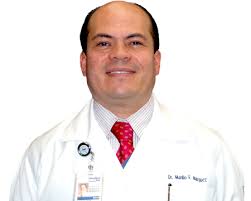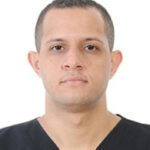Summary of the study:
Koldenkof et al published in Europace the work entitled “Rate control differs in the prevention of progression in atrial fibrillation” 1. It is a sub-analysis of the RACE 4 study. Only patients without using antiarrhythmics were included. Investigators included 666 patients over 18 years of age with a diagnosis of paroxysmal atrial fibrillation (AF) of recent diagnosis. They classified subjects into three groups, those who used heart rate (HR) control with verapamil, those who used beta-blockers (BB) and one group who did not use any drug for rate modulation. It is important to note that those patients who presented symptoms of heart failure decompensation and patients with acute coronary syndrome within 3 months prior to screening were excluded. Of 666 study participants, 47 (7%) used verapamil, 383 (57.5%) used BB, and 236 (35.4%) received no treatment for HR control. The primary endpoint was a combined of need for first electrical cardioversion, pharmacological cardioversion and pulmonary vein isolation due to AF, while the secondary points included major cardiovascular events such as decompensated heart failure, acute coronary syndrome, hospitalization for arrhythmias, major bleeding, thrombotic events embolic or adverse effects of the drugs administered. After a 37-month follow-up, the analysis showed that the primary composite endpoint occurred in 17% of the subjects in the group that used verapamil compared to 33% in the groups that used BB or those that did not use HR control, with a statistically significant P value of 0.038. Authors concluded that the use of verapamil, a non-dihydropyridine calcium antagonist, was associated with a lower probability of progression of AF, in patients recently diagnosed with this condition1.
Editorial comment:
The published results of this substudy are really interesting. They show the advantages of the initial use of calcium antagonists not only as a HR control strategy but also as a preventive therapy to avoid progression of the disease in patients with newly diagnosed AF compared to other pharmacological drugs such as the most commonly used BB. From a pathophysiological point of view, this benefit is easily understandable since it is well known that the release of significant amounts of calcium from the sarcoplasmic reticulum is fundamental for the perpetuation and, therefore, the progression of the substrate responsible for the onset of atrial fibrillation2,3,4. It is known that calcium overload participates in signaling silencing and the progression of more calcium leak during diastole causing afterdepolarizations and therefore, helping to the development of an electrical substrate that perpetuates atrial fibrillation5, 6.If we take into consideration electrophysiological factors such as heterogeneous refractory periods favor the start of fibrillatory conduction waves and abnormal electrical activity that leads to the progression of atrial fibrillation because the calcium reduces the atrial refractory periods5.Therefore, the early implementation of a non-dihydropyridine calcium antagonist therapy, such as verapamil, would be justified, as it not only is associated with a lower need for pharmacological or electrical cardioversion, but it also reduces the need for invasive procedures such as pulmonary veins isolation7. On the other hand, it would be interesting to define the exact role of the autonomic nervous system and what is its participation in the pathophysiology of this condition, especially the role of the adrenergic pathways in the perpetuation and sustaining of AF8. BB therapy may be limited in many patients because it is associated with lower HR in those with concomitant sinus node disease.
What are the limitations of this publication?
We must keep in mind that these benefits are the result of an early diagnosis and a timely establishment treatment. Once AF has progressed to its persistent or permanent presentations, maybe it would not be possible to obtain these advantages. On the other hand, we must highlight that the number of patients who were in the verapamil group (n=47, only 17% of the study sample) was much lower compared to the other groups (i.e., BB were used in 383 patients [57.5%])1.Therefore, a prospective and controlled study is needed to confirm these results. Such study could provide with a more balanced groups, with the same clinical and demographic characteristics, including the HATCH score that was lower in the verapamil group than in the beta-blocker group9.In such prospective study, emphasis in contraindications for the use of verapamil should be taken into account as it may result in a lower number of candidates for such therapy. Adverse events must be clear registered. A sufficient sample size should be calculated to detect significant differences in mortality. Another consideration to be made is that other non-dihydropyridine calcium antagonists should probably also be studied, like diltiazem10.
Final remarks:
Verapamil has been studied in Ibero-America since many years ago11-14. With this new information presented by Koldenhof et al, the early use of non-dihydropyridine calcium antagonists such as verapamil, in patients with newly diagnosed atrial fibrillation, can be beneficial in those who do not have contraindications. Its use could be associated with less progression of this condition. We must keep in mind that these benefits may be restricted by the exclusion criteria mentioned above, so the selection of patients according to their comorbidities is of vital importance prior to the initiation of this pharmacological agent. The study of Koldenhof et al could represent the “revival” of an old drug, verapamil, in AF.
Autores:
Dr. Manlio F. Márquez Murillo
Médico Adscrito al Servicio de Electrocardiología del Instituto Nacional de Cardiología Ignacio Chávez.
Académico Titular de la Academia Nacional de Medicina de México.
Vocal del Comité de Investigación del Instituto Nacional de Cardiología Ignacio Chávez
Secretario del Consejo Mexicano de Cardiología
Coordinador de la Alianza contra la Muerte Súbita, una Iniciativa de la Sociedad Interamericana de Cardiología
Sistema Nacional de Investigadores SNI II

Dr. Manlio F. Márquez Murillo
Médico Adscrito al Servicio de Electrocardiología del Instituto Nacional de Cardiología Ignacio Chávez.
Académico Titular de la Academia Nacional de Medicina de México.
Vocal del Comité de Investigación del Instituto Nacional de Cardiología Ignacio Chávez
Secretario del Consejo Mexicano de Cardiología
Coordinador de la Alianza contra la Muerte Súbita, una Iniciativa de la Sociedad Interamericana de Cardiología
Sistema Nacional de Investigadores SNI II

Dr. Angelo Columna Capellán
Médico Residente de Electrofisiología del Instituto Nacional de Cardiología Ignacio Chávez
References
-
Koldenhof T, Wijtvliet PEPJ, Pluymaekers NAHA, Rienstra M, Folkeringa RJ, Bronzwaer P, Elvan A, Elders J, Tukkie R, Luermans JGLM, van Kuijk SMJ, Tijssen JGP, van Gelder IC, Crijns HJGM, Tieleman RG. Rate control drugs differ in the prevention of progression of atrial fibrillation. Europace. 2022 Mar 2;24(3):384-389.
-
Márquez MF, Gómez-Flores J, Aranda-Faustro A, Cazares-Campos I, Cárdenas M. Avances recientes en la fisiopatología de la fibrilación auricular [Recent advances in the pathophysiology of atrial fibrillation]. Arch Cardiol Mex. 2009 Dec;79 Suppl 2:18-25. Spanish.
-
Jost N, Kohajda Z, Kristof A, Husti Z, Juhasz V, Kiss L et al. Atrial Remodeling and Novel Pharmacological Strategies for Antiarrhythmic Therapy in Atrial Fibrillation. Current Medicinal Chemistry. 2011;18(24):3675-3694.
-
Dagres N, et al. European Heart Rhythm Association (EHRA)/Heart Rhythm Society (HRS)/Asia Pacific Heart Rhythm Society (APHRS)/Latin American Heart Rhythm Society (LAHRS) expert consensus on arrhythmias and cognitive function: what is the best practice?. Europace 2018;20(9):1399-1421.
-
Márquez MF (Ed.) “Fibrilación Auricular”. 2nd Ed. Sociedad Mexicana de Cardiología, PyDESA Editorial, Mexico City, 2018.
-
Rodríguez-Diez G, Márquez MF, Iturralde-Torres P, Molina-Fernández de L LG, Pozas-Garza G, Cordero-Cabra A, Rojel-Martínez U. Joint Mexican position document on the treatment of atrial fibrillation. Arch Cardiol Mex. 2020;90(1):69-76.
-
Márquez MF, González Hermosillo JA, Cárdenas M. Guía para el diagnóstico y tratamiento de la fibrilación auricular [Guidelines for the diagnosis and treatment of atrial fibrillation]. Arch Cardiol Mex. 2006 Apr-Jun;76(2):231-6. Spanish.
-
de Vos C, Pisters R, Nieuwlaat R, et al. Progression From Paroxysmal to Persistent Atrial Fibrillation. J Am Coll Cardiol. 2010 Feb, 55 (8) 725–731.
-
https://doi.org/10.1016/j.jacc.2009.11.040Hu WS, Lin CL. Comparisons of HATCH, HAVOC and CHA2DS2-VASc scores for all-cause mortality prediction in atrial fibrillation: a real-world evidence study. Postgrad Med J. 2022 Jan 24:postgradmedj-2021-141147. doi: 10.1136/postgradmedj-2021-141147. Epub ahead of print. PMID: 35074802.
-
Luciardi H, Berman S, Santana M, Monteros L. Diltiazem por vía intravenosa en la conversión a ritmo sinusal de taquiarritmias supraventriculares [Intravenous diltiazem in the reversion to sinus rhythm in supraventricular tachyarrhythmias]. Arch Inst Cardiol Mex. 1996 Nov-Dec;66(6):505-9. Spanish.
-
De Soldati L, Stritzler G, Balassanian S, Fuksman A, Mario Krasnov C, Rosental R, Chutlian A, Fabregas R. Ensayos de desfibrilación auricular con la asociación quinidina-verapamil por vía oral [Trials of auricular defibrillation with the quinidine-verapamil combination by oral route]. Prensa Med Argent. 1972 May 26;59(17):665-70. Spanish. PMID: 5048460.
-
Shapiro M, Malo R, Férez S, Martínez-Ríos MA, Salazar E. Effectos antiarrítmicos del verapamil [Antiarrhythmic effects of verapamil]. Arch Inst Cardiol Mex. 1976 May-Jun;46(3):305-16. Spanish. PMID: 1088854.
-
Ronderos R, Escudero EM. Efectos del verapamilo en la fibrilación auricular [Effects of verapamil in atrial fibrillation]. Medicina (B Aires). 1985;45(3):247-51. Spanish. PMID: 3841935.
-
Sobrino JA, et al. Combinación de quinidina y verapamil en la fibrilación auricular. Rev Esp Cardiol 1989;42(4):262-266.